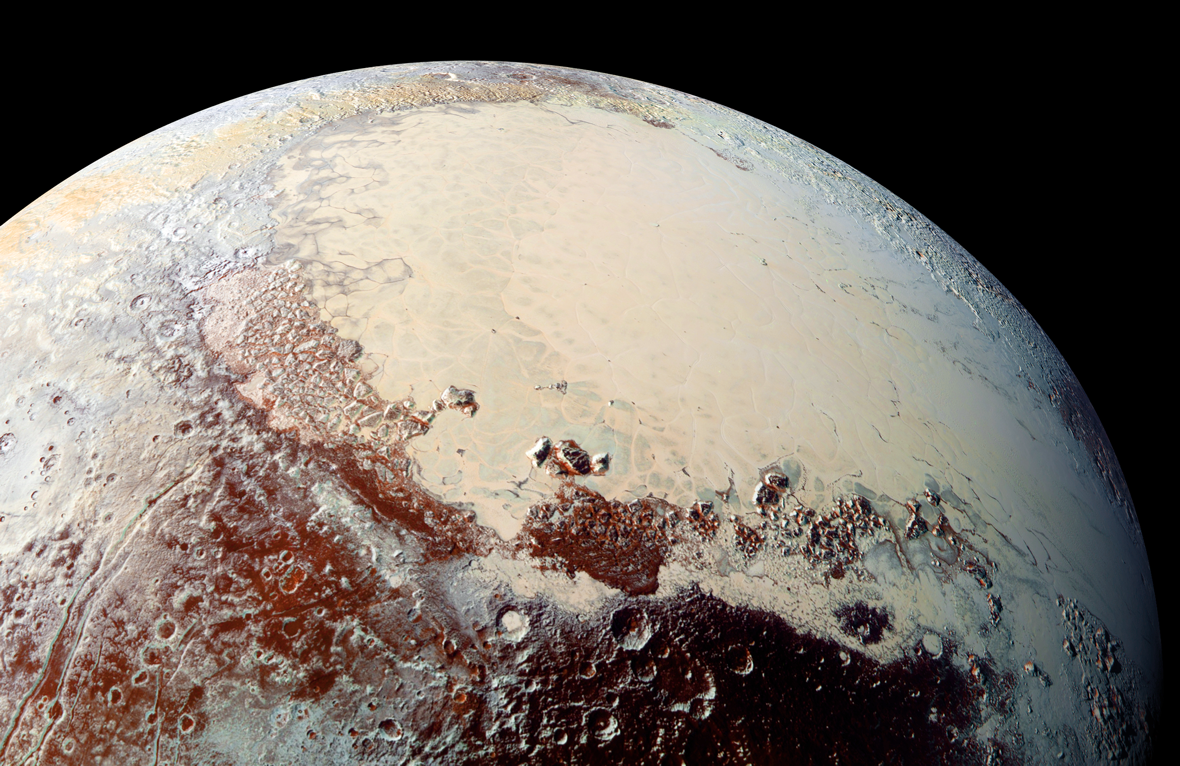
A true colour image of Pluto taken by the New Horizons spacecraft | NASA/JHU APL/SwRI/Alex Parker
As any astronomy enthusiast knows, there’s far more to see in the summer sky than fireworks. Constellations like Leo, Virgo, and Ursa Major will soon come into view, along with several overlapping meteor showers. Among other important dates in astronomy history, July brings the sixth anniversary of the New Horizons Pluto flyby. Read on to learn more about this month in the wonderful world of astronomy!
what’s happening in the night sky!

Night Sky Viewing
Planets
Jupiter and Saturn will begin to rise earlier in the evening, eventually becoming visible just before sunset at the end of the month. Jupiter will be in the constellation Aquarius, and Saturn will be in Capricorn. Mars will set shortly after the Sun, being barely visible during twilight and objectively gone from the sky shortly after nightfall. Venus will move from the constellation Cancer into Leo, and will mostly be visible just after sunset, low to the west. Mercury will be visible to the east, and will achieve apsis (its maximum distance from the Sun) on July 4. To spot the Swift Planet, look to the eastern horizon just before sunrise. This month’s New Moon will be on July 10, and the Full Moon falls on July 24.
Meteor Showers
Late July will bring several overlapping meteor showers, the most prominent of which will be the Delta Aquarids. This powerful meteor shower will begin on July 12 and peak on the evening of July 28, continuing into the early morning hours of July 29. It’s usually better to observe meteor showers very late at night or very early in the morning, but this year, the Delta Aquarids will be better observed in the early evening to avoid losing them in the glare of the nearly full Moon. At their peak, the Delta Aquarids might produce as many as twenty visible meteors per hour. These can appear anywhere in the sky, but will appear to radiate from the constellation Aquarius, located to the south. Two much weaker meteor showers, the Alpha Capricornids and the Piscis Austrinids, will peak July 28-30. The Perseids, one of the strongest meteor showers of the month, will peak in August, but its meteors can be spotted throughout late July.
Constellations and Stars
By the end of the month, constellations Leo, the Lion, and Virgo, the maiden, will set shortly after the Sun. Ursa Major, the Great Bear, will cover much of the northern sky this month. This array of stars is particularly easy to spot because it contains the Big Dipper, perhaps one of the most recognizable constellations in the night sky. You can use the Big Dipper’s handle to find two more constellations: Bootes and Virgo. Astronomers have a saying: arc to Arcturus and spike to Spica. Simply follow the arc of the Big Dipper’s handle to these two stars.
Arcturus is the fourth brightest star in the night sky overall, and the second brightest visible from Flagstaff or farther north. It’s also the brightest star of the constellation Bootes, the Herdsman. Spica is the brightest star of Virgo, the Maiden. Following the arc past Spica will bring you to another constellation: Corvus, the Crow. Following Bootes later in the night will be the constellations of Corona Borealis, the Northern Crown; and Hercules the Hero. Later on in the evening, a few famous constellations will begin to appear in the summer sky. These include the constellations Lyra the Harp, Cygnus the Swan, and Aquila the Eagle. Each of these constellations contains a star of the Summer Triangle, a triad of exceptionally bright stars.

Dates in Astronomy History
July 4
1054: First recorded sighting of the Crab Nebula made by Chinese astronomers
1997: Mars Pathfinder lands on the surface of Mars
July 7
1868: George Ellery Hale is born
1979: Voyager 2 flies past Jupiter
July 9
1979: Voyager 2 flies past Jupiter
July 14
1965: Mariner 4 flies by Mars
2005: New Horizons flies by Pluto
July 20
1969: Apollo 11 lands on the Moon and Neil Armstrong becomes the first man to walk on its surface
July 22
1896: Percival Lowell and Alvan G. Clark arrive in Flagstaff, AZ with the primary lens of the 24″ Clark Refractor
July 23
1896: Lowell Observatory’s 24″ Clark Refractor sees first light
1928: Astronomer and Lowell Advisory Board member Vera Rubin is born
July 28
1851: First photograph of a solar eclipse is taken
1918: Albert Wilson, Lowell Observatory’s 3rd director, is born
July 29
1959: NASA is founded
July 30
1971: Apollo 15 lands on the Moon
July 31
1964: Ranger 7 spacecraft transits the first close-range photos of the Moon